What is walking meditation and what are the benefits?
Walking meditation explained
In this meditation method, you will be able to acquire not just the basic knowledge regarding walking meditation, but extreme power to uplift yourself and your inner experience and sensation beyond tradition and definition.
During sitting, the legs may turn numb, or ‘go to sleep’. This does not mean that the circulation is bad, quite the opposite. There is an old saying in Zen, “A fire that begins in your toes and consumes your whole body”- this is the meaning of this numbness. The smallest thing- even the legs going to sleep- is a subject of investigation in our Zen training. Walking meditation is usually understood as primarily intended to relieve stress in the legs.
Preparations for walking meditation
Finding a Suitable Place
The place where the Lord Buddha did walking meditation at Bodhgaya after his Enlightenment still exists to this day. His walking path was seventeen steps long. These days the Forest Monks tend to make their walking meditation paths much longer — up to thirty steps long.
The beginner may find thirty paces too long because their mindfulness has not yet developed. By the time you come to the end of the path, your mind may have been ―around the world and back. Walking is a stimulating posture, and initially the mind tends to wander a great deal. It is usually better for beginners to start off on a shorter path; fifteen paces would be a good length.
If you do a walk meditation outside, find a secluded place where you won’t be distracted or disturbed. It is good to find a walking path that is slightly enclosed. It can be a distraction to walk in an open area where there is a view, as you may find that the mind is drawn out to the scenery. If the path is closed in, it tends to bring the mind inwards, into one’s self and towards peace. An enclosed area is especially suitable for speculative personalities who like to think a lot; it helps to calm their minds.
Preparing the Body and Mind
Once you have chosen a suitable path, stand at one end. Stand erect. Put the right hand over the left in front of you. Don’t walk with your hands behind your back. By placing the hands in front, it creates a clear determination to focus the mind on walking meditation, to differentiate from, just walking.
The practice is firstly to develop samādhi, a Pali word that means focusing the mind, developing the mind to one – pointedness by gradual degrees of mindfulness and concentration. To focus the mind, one has to be diligent and determined. This requires a degree of physical as well as mental composure.
Make a mental determination on how long you are going to ―walk meditation’, be it half an hour, one hour, or more. However long you determine to walk for, adhere to it. In this manner you are nurturing the mind at that initial stage of the meditation with zest, inspiration and confidence.
Benefits and advantages of walking meditation
The Buddha spoke of five benefits of walking meditation. In the order that he listed them in this Sutta, they are as follows: walking meditation develops endurance for walking long distances; it is good for striving; it is healthy; it is good for the digestion after a meal, and the concentration won from walking meditation lasts a long time.
Developing Endurance for Walking Distances
The first benefit of walking meditation is that it leads to endurance in walking distances. This was particularly important at the time of the Buddha when most people travelled by foot. The Buddha himself would regularly go wandering from place to place, walking up to sixteen kilometers a day. So he recommended that walking meditation be used as a way of developing physical fitness and endurance for walking long distances.
Forest monks these days still go wandering; it is called tudong in Thai. They take their bowls and robes and walk, seeking out secluded places to meditate. In preparation for wandering, they progressively increase the amount of walking meditation so as to develop their physical fitness and endurance. They increase the number of hours of walking meditation a day to at least five or six hours.
Good for Striving
Striving, especially to overcome drowsiness, is the second benefit. While practicing sitting meditation, meditators may slip into tranquil states, but if they are too tranquil, they may start nodding off to sleep. Without mindfulness and awareness, meditation, even though it feels peaceful, can turn into dullness because it has been overcome by sloth and torpor. Doing walking meditation can counteract this tendency.
Good for Health
The Buddha said that walking meditation leads to good health. This is the third benefit. We are all aware that walking is considered a very good form of exercise. These days, we even hear of ―power walking. Well, we are talking here about ―power meditation, developing walking meditation as both a physical and mental exercise. But to get both benefits, we have to bring awareness to the process of walking, instead of just walking and letting the mind wander off thinking of other things.
Good for Digestion
The fourth benefit of walking meditation is that it is good for the digestion. This is particularly important for monks who eat one meal a day. After a meal, the blood goes to the stomach and away from the brain. Thus one can feel drowsy.
Forest monks stress that after a meal one should do a few hours of walking meditation, because walking up and down helps the digestion. For lay meditators too if you have had a heavy meal, instead of going to bed, go out and do an hour of walking meditation. It will help with physical wellbeing and provide an opportunity to cultivate the mind.
Good for Sustaining Concentration
The fifth important benefit of walking meditation is that the concentration arising out of walking meditation sustains itself for a long time. The walking posture is a relatively coarse or complex meditative posture compared to sitting. While sitting, it is easy to maintain one’s posture. We have our eyes closed so there are no visual sense stimuli, and we are not engaged in any bodily movement.
So sitting, in comparison to walking, is a simpler posture in terms of the activities involved. The same is true for standing and lying down, because there is no movement taking place. If one has developed concentration only in the sitting posture, when one gets up from that position and begins with bodily movements like walking, it is harder to maintain that state of concentration. This is because one is moving from a refined state to a coarser state. While we are walking there is much more sensory input.
We are looking where we are going; thus there is visual input. There is also sensory input from the movement of the body. Therefore if we can concentrate the mind while walking and receiving all this sensory stimuli, then when we change from that posture to a simpler one, concentration becomes easier to maintain. That is, when we sit down the strength of mind and power of that concentration carries over easily to this posture. So walking meditation can help to develop strength and clarity of mind, and a concentration that can carry over into other less active meditation postures.
alking meditation: walkthrough
Most people in the West associate meditation with sitting quietly. But traditional Buddhist teachings identify four meditation postures: sitting, walking, standing and lying down. All four are valid means of cultivating a calm and clear mindfulness of the present moment. The most common meditation posture after sitting is walking.
In meditation centers and monasteries, indoor halls and outdoor paths are often built for walking meditation. On meditation retreats, regular walking meditation is an integral part of the schedule. In practice outside of retreats, some people will include walking as part of their daily meditation practice for example, ten or twenty minutes of walking prior to sitting, or walking meditation instead of sitting.
Walking meditation brings a number of benefits in addition to the cultivation of mindfulness. It can be a helpful way of building concentration, perhaps in support of sitting practice. When we are tired or sluggish, walking can be invigorating. The sensations of walking can be more compelling than the more subtle sensations of breathing while sitting. Walking can be quite helpful after a meal, upon waking from sleep, or after a long period of sitting meditation. At times of strong emotions or stress, walking meditation may be more relaxing than sitting.
An added benefit is that, when done for extended times, walking meditation can build strength and stamina. People have a variety of attitudes toward walking meditation. Some take to it easily and find it a delight. For many others, an appreciation of this form of meditation takes some time; it is an acquired taste. Yet others see its benefits and do walking meditation even though they don’t have much taste for it.
To do formal walking meditation, find a pathway about 30 to 40 feet long, and simply walk back and forth. When you come to the end of your path, come to a full stop, turn around, stop again, and then start again. Keep your eyes cast down without looking at anything in particular. Some people find it useful to keep the eyelids half closed.
We stress walking back and forth on a single path instead of wandering about because otherwise part of the mind would have to negotiate the path. A certain mental effort is required to, say, avoid a chair or step over a rock. When you walk back and forth, pretty soon you know the route and the problem-solving part of the mind can be put to rest.
Walking in a circle is a technique that is sometimes used, but the disadvantage is that the continuity of a circle can conceal a wandering mind. Walking back and forth, the little interruption when you stop at the end of your path can help to catch your attention if it has wandered. As you walk back and forth, find a pace that gives you a sense of ease. Fast walking may bring a greater sense of ease when you are agitated. Or fast walking might be appropriate when you are sleepy. When the mind is calm and alert, slow walking may feel more natural. Your speed might change during a period of walking meditation.
See if you can sense the pace that keeps you most intimate with and attentive to the physical experience of walking. After you’ve found a pace of ease, let your attention settle into the body. Once you feel connected to the body, let your attention settle into your feet and lower legs. In sitting meditation, it is common to use the alternating sensations of breathing in and out as an anchor keeping us in the present. In walking meditation, the focus is on the alternating stepping of the feet.
With your attention in the legs and feet, feel the sensations of each step. Feel the legs and feet tense as you lift the leg. Feel the movement of the leg as it swings through the air. Feel the contact of the foot with the ground. There is no right experience. Just see how the experience feels to you. Whenever you notice that the mind has wandered, bring it back to the sensations of the feet walking. Getting a sense of the rhythm of the steps may help maintain a continuity of awareness.
As an aid to staying present, you can use a quiet mental label for your steps as you walk. The label might be, stepping, stepping or, left, right. Labeling occupies the thinking mind with a rudimentary form of thought, so the mind is less likely to wander off. The labeling also points the mind towards what you want to observe. Noting, stepping helps you to notice the feet.
If after a while you notice that you are saying right for the left foot and, left for the right foot, you know that your attention has wandered. When walking more slowly, you might try breaking each step into phases and using the traditional labels, lifting, placing. For very slow walking, you can use the labels, lifting, moving, and placing.
Try to dedicate your attention to the sensations of walking and let go of everything else. If powerful emotions or thoughts arise and call your attention away from the sensations of walking, it is often helpful to stop walking and attend to them. When they are no longer compelling, you can return to the walking meditation. You also might find that something beautiful or interesting catches your eye while walking. If you can’t let go of it, stop walking and do looking meditation. Continue walking when you have finished looking.
Some people find that their minds are more active or distractible during walking than during sitting meditation. This may be because walking is more active and the eyes are open. If so, don’t be discouraged and don’t think that walking is thus less useful. It may in fact be more useful to learn to practice with your more everyday mind. You can train your mind to be present any time you walk. Some people choose specific activities in their daily routines to practice walking meditation, such as walking down a hallway at home or at work, or from their car to their place of work.
In our daily lives, we spend more time walking than sitting quietly with our eyes closed. Walking meditation can serve as a powerful bridge between meditation practice and daily life, helping us to be more present, mindful and concentrated in ordinary activities. It can reconnect us to simplicity of being and the wakefulness that comes from it.
“editation objects for walking meditation
The Buddha taught forty different meditation objects, many of which can be used on the walking path. However some are more suitable than others. I shall discuss a number of these meditation objects here, beginning with those most commonly used.
Awareness of the Walking Posture
The first method is awareness of the walking posture. While walking, place all your attention at the soles of the feet, on the sensations and feelings as they arise and pass away. As you walk, the feeling will change. As the foot is lifted and comes down again into contact with the path, a new feeling arises. Be aware of this sensation on the sole of the foot.
Again as the foot lifts, mentally note the new feeling as it arises. When you lift each foot and place it down, know the sensations felt. At each new step, certain new feelings are experienced and old feelings cease. These should be known with mindfulness. With each step there is a new feeling experienced, feeling arising, feeling passing away; feeling arising, feeling passing away.
With this method, we place mindfulness on the feeling of walking itself, on each step taken, on the vedanā (pleasant, unpleasant or neutral sensations). We are aware of whatever type of vedanā arises at the soles of the feet. When we stand, there is a sensation, a feeling, of the contact with the ground. This contact can produce pain, heat or other sensations.
We place our mindful attention on those feelings, knowing them fully. When raising the foot to take a step, the feeling changes as soon as the foot loses contact with the ground. When we place that foot down, again a new feeling arises as the foot comes into contact with the ground.
As we walk, feelings are constantly changing and arising anew. We mindfully note this arising and passing away of feelings as the soles of the feet lift off or touch onto the ground. In this way we are keeping our full attention just on the sensations that arise through walking.
Have you ever really noticed before the feelings in the feet as you walk? They happen every time we walk, but we tend not to notice these subtle things in life. When we walk, our minds tend to be somewhere else. Walking meditation is a way of simplifying what we are doing when we are doing it. We are bringing the mind to the here and now, being one with walking when walking. We are simplifying everything, quieting the mind by just knowing feeling as it is arising and passing away.
It is important to remember when walking to keep the eyes cast down about a meter and a half in front. Don’t be looking around distracted by this or that. Keep awareness on the feeling at the soles of the feet, and in this way, develop focused attention, and clear knowing of walking while walking.
How fast should you walk? Walk naturally, not too slow or too fast. If you walk fast, you might find it very difficult to concentrate on sensation of feeling arising and passing away. You may need to slow down. On the other hand, some people may need to speed up. You have to find your own pace, whatever works for you. You can begin slowly at first then gradually come to your normal walking pace.
If your mindfulness is weak (meaning your mind wanders a lot), then walk very slowly until you can stay in the present moment of each step. Start by establishing mindfulness at the beginning of the path. When you arrive in the middle of the path, and then mentally ask yourself, where is my mind? Is it on the feeling at the soles of the feet? Do I know the contact here and now, at this present moment? If the mind has wandered off, then bring it back to the sensations at the feet again and continue walking.
When you get to the end of the path, turn slowly around and re-establish your mindfulness. Where is the mind? Has it wandered off? Does it know the feeling at the soles of the feet? The mind tends to wander elsewhere chasing thoughts of: anxiety, fear, happiness, sorrow, worries, doubts, pleasures, frustrations and all the other myriad thoughts that can possibly arise. If mindfulness of the meditation object is not present, re-establish the mind on the simple act of walking, and then begin to walk back to the other end of the path.
When you get to the middle of the path, again note, I am now at the middle of the path‖ and check to see if the mind is with the object. Then, once you arrive at the end of the path mentally note, where is the mind? In this way, you walk back and forth mindfully aware of the feelings arising and passing away. While walking, constantly reestablish your mindfulness pulling the mind back, drawing the mind inward, becoming aware, knowing the feeling at each moment as it is arising and passing away.
As you sustain mindfulness on the sensations and feelings at the soles of the feet, you will notice that the mind gets less distracted. The mind becomes less inclined to go out to things that are happening around you. You become calmer. The mind becomes tranquil as it settles down. Once the mind is calm and tranquil, then you’ll find that walking becomes too coarse an activity for this quality of mind. You will just want to be still. So stop and stand to allow the mind to experience this calm and tranquility.
Walking involves the mental volition to move, and your mind may be too focused on the meditation object to move. Continue the practice in a standing position. Meditation is about the work of the mind, not about any particular posture. The physical posture is just a convenient means to enhance the work of the mind.
This calmness and tranquility is known as passaddhi; it is one of the factors of Enlightenment. Concentration and tranquility work together with mindfulness; combined with the factors of energy, investigation of Dhamma, joy, and equanimity, they make up the “Seven Factors of Enlightenment”. When in meditation the mind is tranquil, then because of that tranquility there will arise a sense of joy, rapture, and bliss. The Buddha said that the bliss of peace is the highest happiness.
A concentrated mind experiences that peace, and this peace can be experienced in our lives. Having developed the practice of walking meditation in a formal context, then when we are walking around in our daily lives going to the shops, walking from one room to the other, we can use this activity of walking as meditation. We can be aware just of walking, simply being with that process. Our minds can be still and peaceful. This is a way of developing concentration and tranquility in our daily lives.
From Sitting Meditation to the Walking Path
If while doing sitting meditation, the mind becomes tranquil with a certain meditation object, then you can use that same object in walking meditation. However with some subtle meditation objects, such as the breath, the mind must have attained a certain degree of stability in that calmness first.
If the mind is not yet calm and you begin walking meditation focusing attention on the breath, it will be difficult, as the breath is a very subtle object. It is generally better to begin with a coarser object of meditation, such as the sensations of feelings arising at the feet. There are many meditation objects that do transfer well from the sitting to the walking posture: for example the Four Divine Abiding: Loving kindness, Compassion, Appreciative Joy and Equanimity.
As you pace back and forth develop the expansive thoughts based on loving kindness, “May all beings be happy, may all beings be at peace, may all beings be free from all suffering”. You can use the walking posture as a complement to sitting, developing meditation on the same object but in a different posture.
Choosing a Mantra
If while walking meditation you find that you are getting drowsy, then activate the mind, rather than calm it, with a mantra so that it becomes more focused and awake. Use a mantra like Buddho, repeating the word quietly to yourself over and over again. If the mind still wanders, then start saying Buddho very quickly, and walk up and down very fast. As you walk, recite Buddho, Buddho, Buddho. In this way, your mind can become focused very quickly.
Let me tell you a story that illustrates the effectiveness of a mantra. When Tan Ajahn Mun, the famous forest meditation teacher, was dwelling in North Thailand, the hill tribes in the area knew nothing about meditation or meditation monks. However the hill tribe people are very inquisitive. When they saw him walking up and down on his path, they followed him in a line. When he turned around at the end of the path, the whole village was standing there.
They had noticed him walking back and forth with his eyes cast down and had assumed he was searching for something. They enquired, What are you looking for, Venerable Sir? Can we help you find it? He skillfully replied, I’m looking for Buddho, the Buddha in the heart. You can help me to find it by walking up and down on your own paths looking for the Buddha. With this simple and beautiful instruction, many of those villagers began meditating, and Tan Ajahn Mun said they obtained wonderful results.
Contemplation of the Way Things Are
Investigation of Dhamma is one of the Factors of Enlightenment. Contemplating the teachings and the laws of nature can be employed while walking up and down the meditation path. This does not mean that one thinks or speculates randomly. Rather, it is the constant reflection and contemplation of the Truth, the Dhamma.
Investigating Impermanence
For example, one can contemplate Impermanence by observing the process of change, and seeing how all things are subject to change. One develops a clear perception of the arising and passing away of all experience.
Life is a continual process of arising and passing away, and all conditioned experience is subject to this law of nature. By contemplation of this Truth, one sees the characteristics of existence. One sees that all things are subject to change. All things are not satisfactory. All things are not self. One can investigate these fundamental characteristics of nature on the walking meditation path.
Recollecting Generosity and Virtue
The Buddha continually stressed the importance of generosity and virtue. While on the walking path, one can reflect on one’s virtue or on acts of generosity. Walk up and down and ask yourself, Today, what acts of goodness have I done?
Goodness is a cushion for tranquility, a base for peace. If we have done acts of kindness during the day—having said a kind word, done a good deed, been generous or compassionate—then the mind will experience joy and rapture.
Those acts of goodness, and the happiness that comes from them, will become the conditional factors for concentration and peace. The powers of goodness and generosity lead to happiness and it is that wholesome happiness which forms the foundation for concentration and wisdom.
The recollection of one’s good deeds is a very appropriate meditation subject when the mind is restless, agitated, angry, or frustrated. If the mind lacks peace, then recollect your past kind actions. This is not to for the purpose of building up your ego, but recognition of the power of goodness and wholesomeness. Acts of kindness, virtue and generosity bring joy into the mind, and joy is a Factor of Enlightenment.
Recollecting acts of generosity; reflecting on the benefits of giving; recalling one’s virtue; contemplating the purity of harmlessness, the purity of honesty, the purity of propriety in sexual relations, the purity of truthfulness, the purity of non-confusion of mind by avoiding intoxicants, all of these recollections can serve as meditation objects on the walking path.

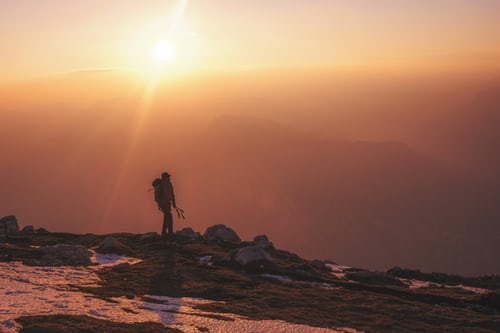
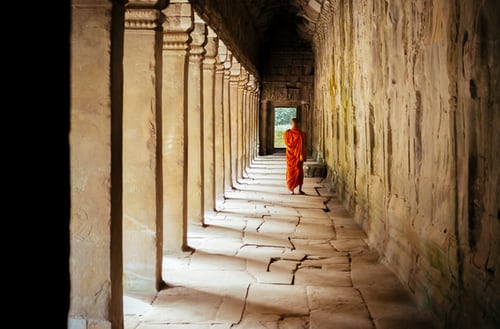

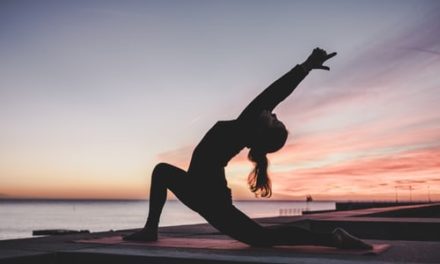
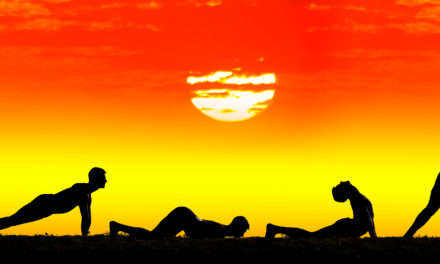
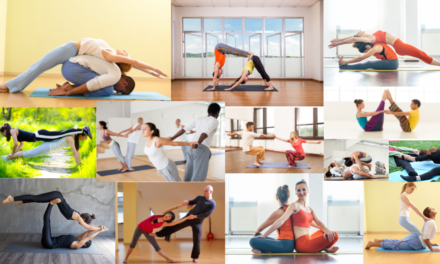
0 Comments